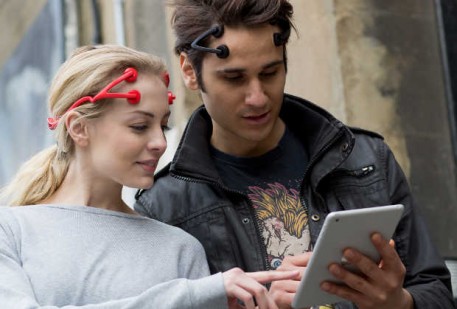CLBB Faculty Member Josh Buckholtz is the lead author of a new, pioneering study revealing insights into how humans make decisions about punishment and process blameworthiness. This study has important implications for the field of law and neuroscience, and was made possible in part by support from the Center for Law, Brain & Behavior. Below is an article describing the findings. Continue reading »
Pinpointing Punishment
- Category: News
- Tags: blameworthiness | decision-making | Josh Buckholtz | punishment | TMS
- Date: October 23, 2015
- Author: Harvard Gazette
From Blame to Punishment: Disrupting Prefrontal Cortex Activity Reveals Norm Enforcement Mechanisms
By Joshua W. Buckholtz, Justin W. Martin, Michael T. Treadway, Katherine Jan, David H. Zald, Owen Jones, and René Marois | Neuron | September 16, 2015
Summary:
The social welfare provided by cooperation depends on the enforcement of social norms. Determining blameworthiness and assigning a deserved punishment are two cognitive cornerstones of norm enforcement. Although prior work has implicated the dorsolateral prefrontal cortex (DLPFC) in norm-based judgments, the relative contribution of this region to blameworthiness and punishment decisions remains poorly understood. Here, we used repetitive transcranial magnetic stimulation (rTMS) and fMRI to determine the specific role of DLPFC function in norm-enforcement behavior. DLPFC rTMS reduced punishment for wrongful acts without affecting blameworthiness ratings, and fMRI revealed punishment-selective DLPFC recruitment, suggesting that these two facets of norm-based decision making are neurobiologically dissociable. Finally, we show that DLPFC rTMS affects punishment decision making by altering the integration of information about culpability and harm. Together, these findings reveal a selective, causal role for DLPFC in norm enforcement: representational integration of the distinct information streams used to make punishment decisions.
- Category: Publications
- Tags: blameworthiness | decision-making | Josh Buckholtz | punishment | TMS
- Date: September 23, 2015
- Author: Neuron
Electrify your brain…Supercharge your mind?
Society has long fantasized about a day when science would provide technological cures for societal ills such as aggression, impulsive decision-making, and depression. In the popular science fiction TV Show, Star Trek, a medical tricorder was waved over the body, magically probing internal systems and recalibrating problems without any side effects. For some medical illnesses, such a device seems just around the corner (See Qualcomm’s $10 Million Tricorder XPrize; Scanadu Scout). However, for mental illnesses, which are particularly complex and poorly understood, such a solution remains elusive. Nevertheless, several prominent media outlets have drawn attention to the use of transcranial direct current stimulation (tDCS), a technique which delivers a low-intensity direct current to modulate the activity of neurons in the cerebral cortex, as an early example of such a fabled device.

Indeed, by utilizing tDCS, researchers at academic medical centers have made widespread reports of its therapeutic effects on a number of neuropsychiatric disorders ranging from major depressive disorder, pain disorders, musculoskeletal disorders, drug addiction, Parkinson’s disease and motor deficits after stroke. Moreover, outside a disease population, researchers have also found that a normal population is capable of benefitting from tDCS – showing increased performance across a variety of cognitive tasks such as attention, memory and decision-making.
Continue reading »
- Category: Uncategorized
- Tags: consumer technology | ECT | ethics | neuroethics | non-invasive stimulation | performance enhancement | tDCS | TMS
- Date: January 24, 2014
- Author: Justin Stahl



